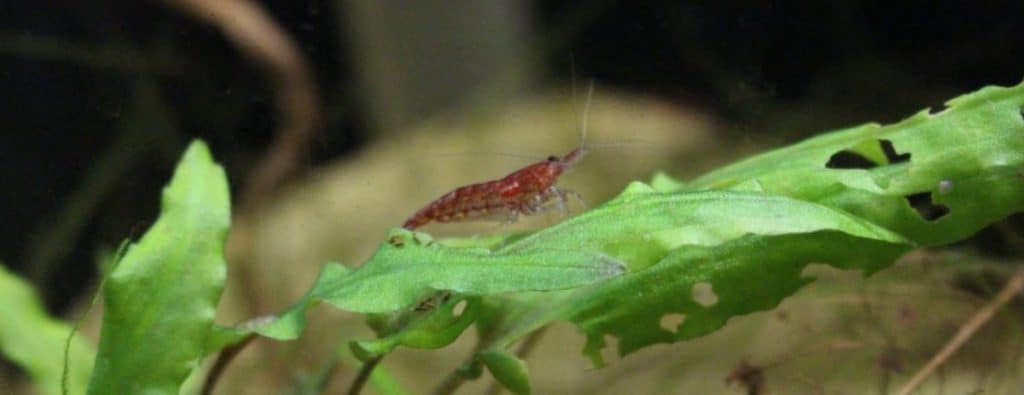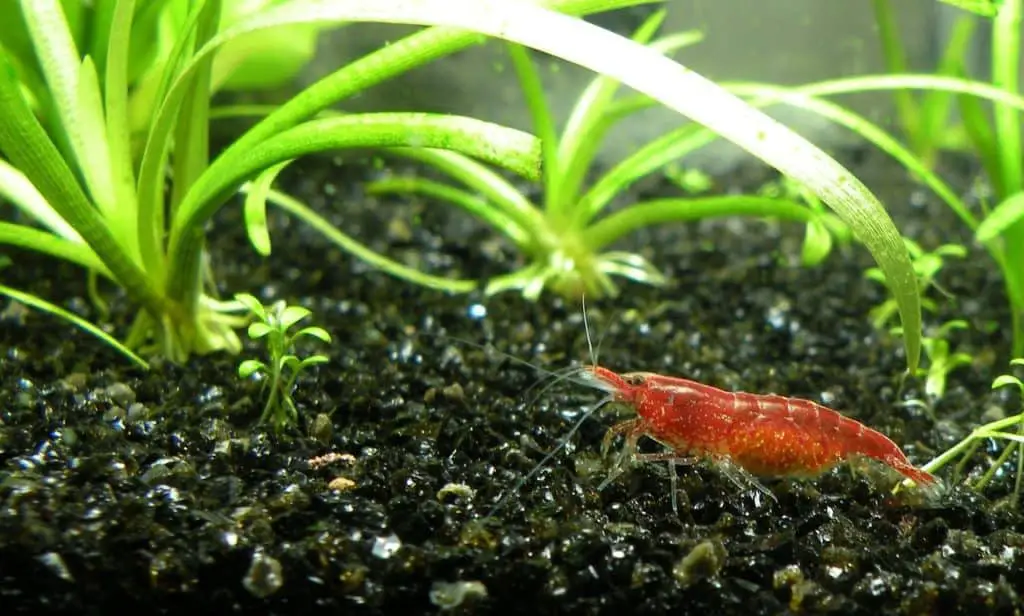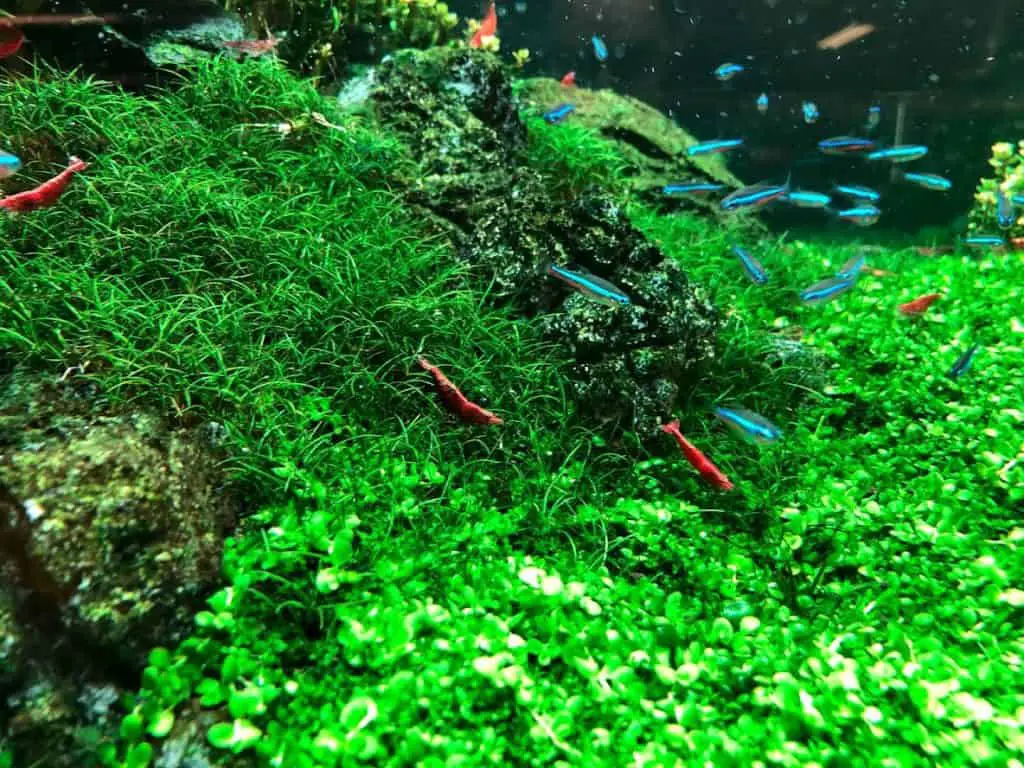Cherry shrimp, red cherry shrimp, or Neocaridina davidi are popular freshwater aquarium inhabitants known for their vibrant red color. These shrimp are relatively small, reaching an adult length of about 1-1.5 inches. If you’re a shrimp enthusiast or planning to add cherry shrimp to your aquarium, you may wonder how fast these fascinating creatures grow. In this article, we will explore the growth rate and factors that affect the growth of cherry shrimp.
- How long does it take for cherry shrimp to grow?
- What are the ideal water parameters for cherry shrimp growth?
- What should I feed my cherry shrimp to promote faster growth?
- How can I create a suitable environment for cherry shrimp growth?
- What is the growth process of cherry shrimp?
- Frequently Asked Questions
- How fast do cherry shrimp grow?
- How fast do baby cherry shrimp grow?
- What do baby cherry shrimp look like?
- Do cherry shrimp grow faster in a planted tank?
- How long does it take for cherry shrimp to breed?
- Do cherry shrimp eat their babies?
- How much do cherry shrimp grow per week?
- What water quality is best for cherry shrimp growth?
- Can cherry shrimp grow in a small tank?
- Are cherry shrimp compatible with other fish in a tank?
How long does it take for cherry shrimp to grow?
What is the growth rate of cherry shrimp?
The growth rate of cherry shrimp varies depending on several factors, including water parameters, diet, and genetics. On average, cherry shrimp take about 3-4 months to reach their adult size, although some individuals may grow faster or slower. They undergo several molting cycles, shedding their exoskeleton to accommodate their increasing size.
At what age do cherry shrimp reach their adult size?
Cherry shrimp typically reach adulthood at around 4-6 months of age. During this period, they may undergo multiple molts to shed their old exoskeleton and grow a new one. It is important to create a suitable environment for them to molt successfully, as improper water conditions or stress can result in failed molts and even death.
What factors affect the growth rate of cherry shrimp?
Several factors can influence the growth rate of cherry shrimp. The most significant factors include water parameters, diet, and genetics. Maintaining stable and optimal water conditions is crucial for cherry shrimp’s growth and overall health. Factors such as temperature, pH level, ammonia, and nitrite levels should be monitored and kept within the appropriate range. Additionally, feeding high-quality food and providing hiding places, such as live plants and sponge filters, can contribute to the overall growth rate of cherry shrimp.

What are the ideal water parameters for cherry shrimp growth?
What water conditions are necessary for cherry shrimp growth?
To ensure the healthy growth of cherry shrimp, it is crucial to provide them with suitable water conditions. These shrimp thrive in slightly acidic water to neutral, with a pH range of 6.5 to 7.5. The temperature should be maintained between 72°F and 82°F (22°C to 28°C). Furthermore, cherry shrimp are sensitive to ammonia and nitrite, so keeping these levels at zero is essential. Regular water changes and a reliable filtration system can help maintain optimal water quality.
What is the ideal pH level for cherry shrimp to grow?
Cherry shrimp prefer a pH level slightly on the acidic side, ranging from 6.5 to 7.5. It is important to monitor the pH level regularly and make adjustments as necessary to ensure the well-being and growth of the shrimp.
How does water quality affect cherry shrimp growth?
Water quality significantly influences cherry shrimp’s growth and overall health. Poor water conditions, such as high ammonia or nitrite levels, can hinder their growth and even lead to health issues. Monitoring water parameters regularly and taking appropriate actions to maintain optimal conditions is important. Regular water changes, proper filtration, and a well-balanced diet are crucial for a healthy environment for cherry shrimp growth.

What should I feed my cherry shrimp to promote faster growth?
What do cherry shrimp eat for optimal growth?
Cherry shrimp are omnivores and have a varied diet. They feed on algae, biofilm, and other organic matter in the aquarium. For optimal growth, it is important to provide a balanced diet that includes both natural food sources and supplemental food.
Are there specific foods that can enhance cherry shrimp growth?
There are several foods available that can enhance the growth of cherry shrimp. Commercially prepared shrimp food is widely available and provides a balanced diet for optimal growth. Additionally, as supplementary food, blanched vegetables such as spinach, zucchini, or cucumber can be offered. These vegetables should be softened by boiling and then cooled before offering them to the shrimp.
How frequently should cherry shrimp be fed to aid in their growth?
Cherry shrimp should be fed small amounts of food once or twice a day. It is important not to overfeed them, as uneaten food can pollute the water and lead to poor water quality. Feeding various foods helps ensure the shrimp receives all the necessary nutrients for growth and overall health.
How can I create a suitable environment for cherry shrimp growth?
What type of aquarium setup is best for cherry shrimp growth?
A well-planted aquarium with hiding places and suitable substrate is ideal for cherry shrimp growth. Java moss, marimo moss balls, and small, dense plants such as Anubias or Cryptocoryne provide excellent hiding places for the shrimp while maintaining stable water conditions. A sponge filter is also recommended as it provides filtration and serves as a surface for biofilm growth, an important food source for cherry shrimp.
Which live plants promote cherry shrimp growth?
Live plants play a crucial role in promoting cherry shrimp growth. Plants such as Java moss, Water Sprite, and Hornwort are excellent choices for a shrimp tank. They provide shelter and grazing surfaces and help maintain stable water parameters by absorbing excess nutrients.
What water parameters should be maintained for cherry shrimp growth?
For optimal growth, cherry shrimp require stable water parameters. The temperature should be maintained between 72°F and 82°F (22°C to 28°C), and the pH level should be in the range of 6.5 to 7.5. Regular monitoring and maintenance of ammonia and nitrite levels are important, as cherry shrimp are particularly sensitive to these water parameters.

What is the growth process of cherry shrimp?
How do cherry shrimp progress from being shrimplets to adults?
Cherry shrimp go through several stages of growth, from shrimplets to adults. After hatching from the eggs, they start their life as tiny shrimplets. As they grow, they undergo molts, shedding their exoskeleton to accommodate their increasing size. The shrimp’s exoskeleton is shed during each molt, and a new, larger exoskeleton forms. This growth process continues until they reach their adult size.
What are the key stages of cherry shrimp growth?
There are several key stages in the growth of cherry shrimp. After hatching, they enter the shrimplet stage, where they are tiny and vulnerable. As they grow and molt, they progress through the juvenile stage, developing their characteristic bright red color. Finally, they reach sexual maturity and become adult cherry shrimp.
How often do cherry shrimp molt during their growth?
Cherry shrimp molt periodically throughout their growth process. Molt frequency can vary among individuals, but on average, cherry shrimp molt every 3-4 weeks. They shed their exoskeleton during molting, and the new exoskeleton hardens.
In conclusion, the growth of cherry shrimp is influenced by various factors, including water parameters, genetics, and diet. Creating a suitable environment with stable water conditions, a balanced diet, and ensuring proper care will promote these fascinating shrimp’s optimal growth and development. You can enjoy watching your cherry shrimp thrive and add beauty to your aquarium by offering the right conditions.

